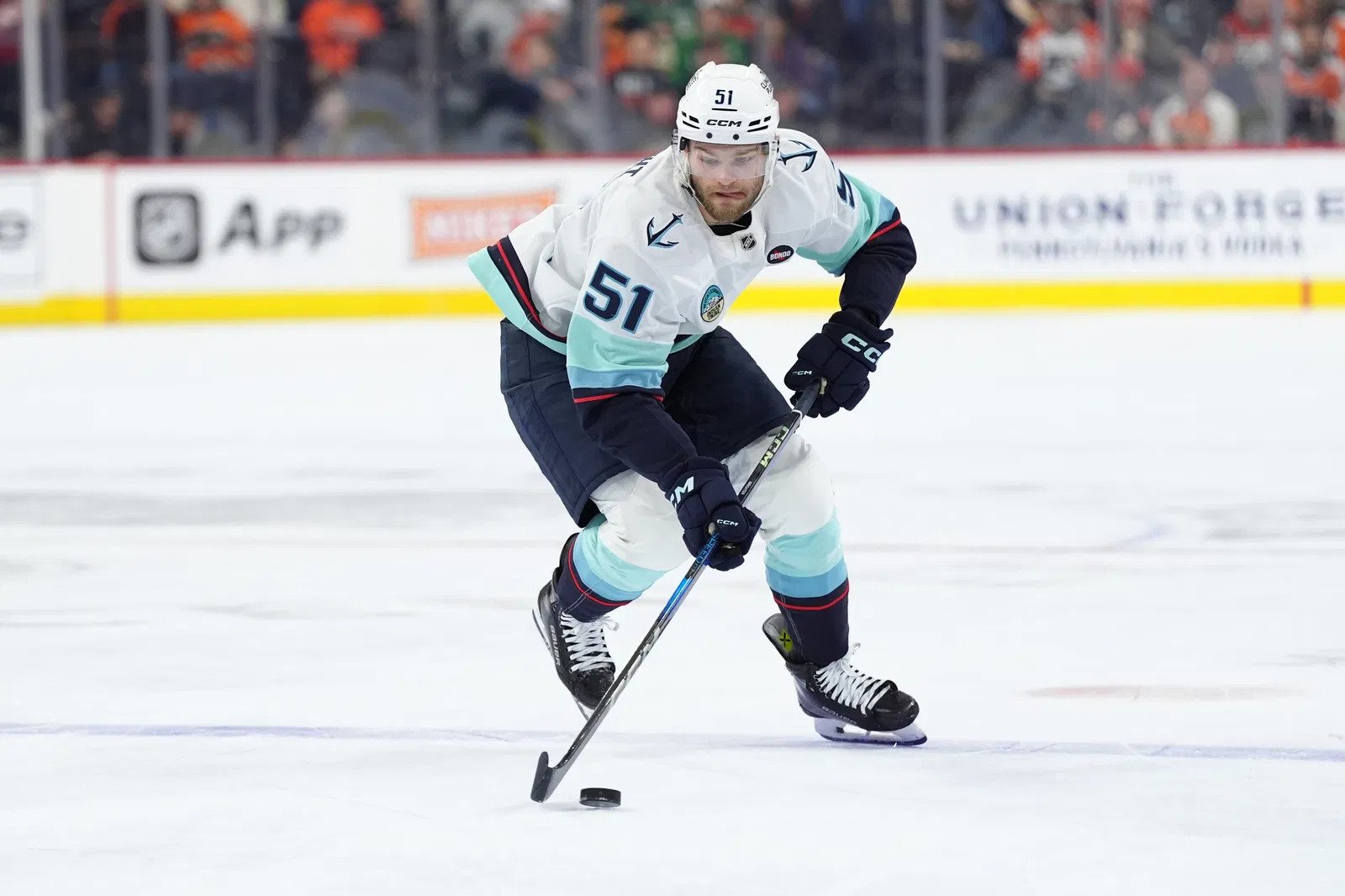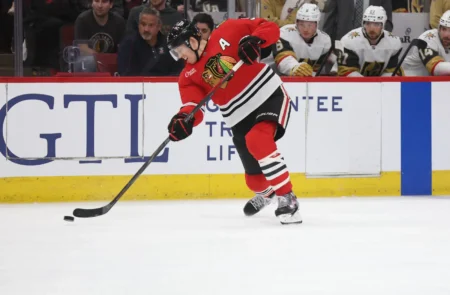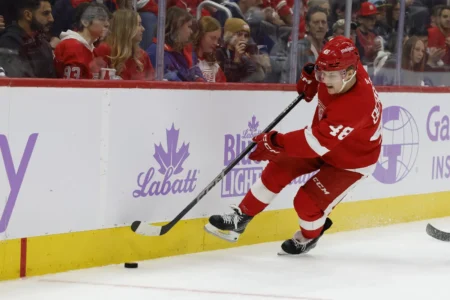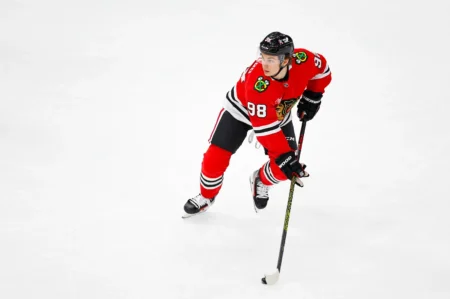Seattle Kraken forward Chandler Stephenson appeared at No.3 on The Athletic's Dom Luszczyszyn's top 10 worst contracts list in 2025.
The 31-year-old signed a massive, seven-year, $6.25-million contract with the Kraken in the 2024 off-season, and after a poor first year, he finds himself on a not-so-friendly list.
The 2024-25 season witnessed Stephenson score 13 goals and 51 points in 78 games, a respectable output, but his struggles at 5-on-5 were concerning. 18 of his 51 points came on the man-advantage, and despite averaging a career-high in ice time, his points per game fell off quite a bit from his production with the Vegas Golden Knights.
Stephenson is in a weird spot with the current Kraken roster. The Kraken are hoping for some trio of Matty Beniers, Shane Wright, Berkly Catton, and Jake O'Brien to lead them down the middle of the ice, which would put Stephenson on the fourth line or as a winger. Either way, Stephenson doesn't fit into the future plans despite being locked in for six additional seasons.
"One year removed from Seattle’s big bet on Chandler Stephenson, it is still mystifying that the Kraken ever gave a 30-year-old declining center $6.25 million per year for the next seven years. One year into the deal, nothing has changed on that front. It was a poor decision at the time and that’s played out on the ice.
A surface-level analysis of Stephenson’s game might view that sentiment as incredibly unkind. Stephenson scored 51 points last year and was second on the team in scoring. He was the team’s top faceoff man, led all forwards in ice-time playing nearly 20 minutes per game and took on some of the team’s toughest matchups. On the surface, Stephenson seems like a fine player. Dig deeper, though, and a lot of Stephenson’s production rings hollow. He’s an empty-calorie scorer.
For starters, much of his production hinges on the opportunity he would not get elsewhere. Of Stephenson’s 51 points, 18 were thanks to playing on the team’s top power play, where 11 were secondary assists. At five-on-five, he scored just 1.57 points-per-60, ninth among forwards and directly behind recent salary dump Andre Burakovsky. On a bad team, someone has to score, but it doesn’t mean they’re actually adding much to the team’s bottom line — they’re just getting a lot of minutes. It’s the Mikkel Boedker Rule.
The bigger issue, though, is Stephenson’s five-on-five play. That was a red flag going into free agency, where it looked like he would struggle without Mark Stone. Lo and behold, Stephenson managed just a 37 percent xG last year, seven percentage points lower than the next-worst Kraken forward. The gap between the 13th and 14th being that large is difficult to comprehend, a matter of Stephenson being incredibly porous without the puck. With him on the ice, the Kraken gave up 0.45 more xGA/60, the sixth-worst mark in the league and one that is consistent with his last season in Vegas. Stephenson is a defensive black hole, and that showed up on the scoresheet, too, where the Kraken gave up a lot of goals against with him on the ice.
Some of that can be explained by usage and easing Stephenson’s burden can allow the Kraken to squeeze more juice out of his minutes. He’s not a bad player, but it is highly debatable whether he’s a true top-six player anymore. Paying $6.25 million for a likely third-line center is not ideal. Even less ideal is Stephenson’s age and the term remaining, where things are only likely to get worse from here on out. His age profile does not suggest he will age gracefully either.
At his price tag, Stephenson needs to be a capable second-line center for the next six years for Seattle. In Year 1, he already doesn’t look like one — even if he’s used like one," said Luszczyszyn.

Only Jonathan Huberdeau (Calgary Flames) and Ivan Provorov (Columbus Blue Jackets) ranked ahead of Stephenson. Coming in after him were Brady Skej (Nashville Predators), Nicolas Hague (Nashville Predators), Sean Couturier (Philadelphia Flyers), Ryan Pulock (New York Islanders), Sam Bennett (Florida Panthers), Cody Ceci (Los Angeles Kings) and Tanner Jeannot (Boston Bruins).
Some of these players are definite overpays, but can still live up to some of their contracts, while Stephenson seems to be stuck in a losing situation.
 Despite Having A State Income Tax Advantage, The Kraken Still Rank Far Below NHL Average In Contract DiscountsThe Seattle Kraken don't just rank below the NHL average; they rank dead last in the NHL in average contract discounts.
Despite Having A State Income Tax Advantage, The Kraken Still Rank Far Below NHL Average In Contract DiscountsThe Seattle Kraken don't just rank below the NHL average; they rank dead last in the NHL in average contract discounts.
Read the full article here














